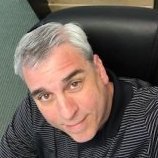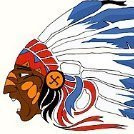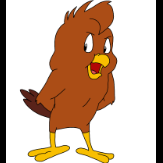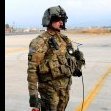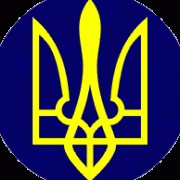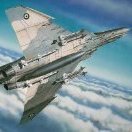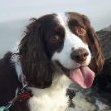Leaderboard
Popular Content
Showing content with the highest reputation on 04/14/2021 in all areas
-

1/32 Copper State Nieuport XXIII
Greg W and 7 others reacted to scvrobeson for a topic
Thank you all for your very nice comments. This is a truly supportive community of modelers. I'm glad you all like the work, I'm really enjoying the kit, scheme, and the chance to try the new texture masks. They really have opened up some new avenues for painting and weathering. The tape is now off, so the camo scheme has been revealed. Now for some gloss, then decals will go next. Please let me know what you think of it. Matt8 points -
8 points
-
Good Morning all. I would like to introduce myself. I tried once before on these forms, but the project stalled indefinitely, and I'm not much for posting WIP threads. I have been following along builds here for many years, and I think LSP is my favorite modeling forum by far. You folks are some of the kindest and most talented modelers out there. A little about me, I grew up in my dads local hobby store and have been building for most of my life. I have always done 1/48 scale models, and felt it was time to jump into something a little bigger. I bought this kit when it fist came out and started assy, but frankly I got intimidated by it and it sat on the SOD for years. I decided this year to finish up any SOD kits and this was the last one. So here it is. Now that summer is coming quickly my building will slow considerably, but I'm thinking for the fall/winter season a trumpeter avenger in the FAA livery would be a very nice compliment to this kit. All in all, I found it to be a bit of a difficult build. However, it put me out of my comfort level in a wonderful way and am quite pleased with the result. I chose the FAA scheme simply because I haven't seen it done anywhere on this kit before. I used mostly vallejo air and tamiya colors. The build is strictly out of the box. Hope you all enjoy it. Thanks for looking. PS, please excuse my photos. I'm far from a pro photographer.6 points
-
A-10 Night/All Weather 1/32 Trumpeter Kit
FreightDog and 5 others reacted to Rascal for a topic
Hi everyone, Finally finished this Trumpeter kit, and my last model for a while I think now that summer is beginning to appear. I thought the 2 seater version of the A-10 would make quite an unusual model and something a bit different. It was quite an involved build, so I took my time. I went for a "flipper" paint scheme which isn't accurate to this particular A-10, but I thought it more interesting than the original dark grey. I changed the instrument panel in the front to a coloured photo etched one I had, but the rear one is as it came out the box - no detail at all on the panel, only a pretty rubbish decal but best I could do. The kit came with detailed resin engines, a lot of metal parts too and rubber tyres. I added a couple of hoses to the engine from wire. The gun and pitot tube are aftermarket metal items. The ejection seats which come with the kit are really nice with plenty of detail. I used alcad 2 enamel for the paint scheme, followed by Vallejo varnish and a black acrylic wash. The kit contains a whole sprue for the gun and magazine, which would be completely hidden after building so I'll perhaps build that later if I can think how to display it. The loadout isn't especially representative - it probably wouldn't have got off the ground with that lot on, however I went for a static display loadout. Definitely a tricky build for me this one, but I'm pleased with how it turned out in the end. It's sitting on a Coastal Kits base.6 points -
RAF FG.1 XV571 WILD HARE Phantom Conversion
GMK and 5 others reacted to Anthony in NZ for a topic
Kerry is now working on the new Spey Vari-ramps, shape and hole perforations are very different to the US ones... This is the preliminary shaping, a lot more to go...6 points -
thanks chaps ..just a quick one I cut away the under fuselage to allow mating of the rad structure - the roof of the rad intake at the front seems also to have some sort of slat arrangement, but I only have a couple of oblique photos to work from so imagineered this bit.. ..also the flat panel in front of it was let in by using a template glued on to cut away the skinning and then some work to flatten the underlying structure before adding a more detailed panel.. TTFN Peter6 points
-
Hi guys, In between my "normal" projects I like to build old kits. Just as they come OOB, faults and all, to see how they look like with current build techniques. The only extra things I usually do is to close off open wheelbays, jet pipes, air intakes and cockpits to prevent that dreaded see-through look. And ofcourse correct the often challenging fit of parts. I just build them nice and shiny and put them on a special shelf in my cabinet. Here are some box scale jet models from the early days of Revell. First is the Revell Convair F-106A Delta Dart prototype I completed recently. According to Scalemates the scale is 1/67 and it was first released in 1959: Amazingly, this kit has recessed surface detailing. The original decals were used, after a few weeks behind the window to get rid of the yellowing. Before use, I gave them an extra coat of gloss varnish to avoid falling apart. That was not entirely succesful, but I was able to cobble the broken decals together again. The second is the Revell Vought F7U-3 Cutlass According to Scalemates the scale is 1/60 and it was first released in 1953 and this version a year later. The version I build was the release in the Revell Classic range from 2010: This mould was showing its age, a lot of surface imperfections had to be neatened. Something Revell acknowledged in the instructions by showing a file at places where to improve the surface. The decals were modern and behaved perfectly. The third is the Martin B-57 Intruder According to Scalemates the scale is 1/81 and it was first released in 1956. The version I build was the release in the Revell Classic range from 2011: The fit of parts was ok with this one, except the canopy. This was solved with plenty of Kristal Kleer. Also with this one, the decals were modern and included the red walkways as well. I hope you like them. Cheers, Peter5 points
-
Here is its twin...get it. Honestly just happy they look like the same guy painted both of them, onto the push rods and other accessories.4 points
-
RAF FG.1 XV571 WILD HARE Phantom Conversion
Supersonic and 3 others reacted to Anthony in NZ for a topic
Nothing I can take credit for, but a test print for sizing is on it's way to me to trial... Didnt Kerry do a great job? Imagine what this will look like in a hi-res print? Thanks so very much Kerry, but also those involved who are helping with photo's, drawings, encouragement as well as offers with their high end printers to help make this happen. As you can see they are highly accurate. I just hope I can do it justice when I get a final print and paint it nicely! Cheers Anthony4 points -

Italeri CF-104 Starfighter "Kicked up a Notch": KLP Publishing eBook now Available!
HerculesPA_2 and 3 others reacted to chuck540z3 for a topic
March 30/21 I hate the end of any modeling project, but this one more in particular. So many of the tiny details are left off the model until the very end for fear of breakage, but this is also usually when the model is the most difficult to handle at the same time. At about 21” long not including the needle-like pitot tube on the nose, it’s hard to work with this jet without it banging into everything, damaging the paint. All the hard work you put into a model can come crashing down at the end if you’re unlucky or not careful. In any case, this model is DONE! I do, however, have some recent challenges that I'd like to share as follows; - I left off the control surfaces for ease of handling and painting, which worked great. With no tabs to use to attach them to the wings and tail, however, they are tough to glue using CA glue without making a mess, especially after painting. I pulled it off OK, but it was unnecessary stress to do so and if I built this model again, I would glue them on early before paint with Tamiya cement. - The open Avionics Bay cover and Canopy are likely the most vulnerable parts of any build I’ve dealt with before, because again, there are no tabs to slide them into. They just sit there and presumably other modelers have used CA glue to secure them, risking pretty much everything as they hang over the side defying gravity. For this I figured out a better way, using small drill bit pins to hold them in place without any glue at all. It was risky drilling the holes into the sides of the thin fuselage walls, but I’m pretty happy with the results. - Gluing a painted canopy rail inside the canopy was also tricky, because there are only 2 contact points at the rear, leaving the front and one side unsecured. This was also accomplished with thin CA glue without a major mishap, but it too was risky and stressful. - My method of attaching the landing gear at the end worked like a charm, but then again, I did trim and dry fit everything before paint to make sure that happened. Landing gear doors, however, also without attaching tabs, were a real pain to attach cleanly. Did I mention that this was stressful as well? - I weathered the model with pastels to show that this was a working jet and not a museum piece, but still not filthy like maybe a Greek Starfighter. I think it added just the right amount of realism and made it more interesting to look at, which changes from every angle with different lighting. One last step I would like to show is final assembly of the landing gear and other items, starting with this: Not only do the ResKit wheels look great on the kit legs, you can align the wheels perfectly with them off the model which is a first for me. I added the main hydraulic brake line down the legs according to references and not much else, other than tie-down hooks which is found on the left and missing on the right (it fell off, since fixed). While the wheels are circles going over square pegs for the legs, they still fit nice and tight with a little trimming. These wheels are directional and according to references, that bulbous notch feature on the wheel should be at the rear on either side, while the brake line goes into the side of the coupling at the top of the wheel. With everything attached that hangs on the bottom, plus a little weathering with pastels. And now a few pics of the completed model. This metallic finish was really hard to photograph, because on a flat light background, it reflects nothing, dulling the look of the finish. As a result, I retook a few of them from many different angles with my go-to blue background, which shows the metallic sheen a lot better. Here’s what I mean… VS. Final Thoughts This kit is a real mixed bag of some good features and many challenges, but overall can be made into a pretty accurate looking F-104. The deep and wide panel lines are the weakest part of the fuselage which are very hard to mitigate, so you pretty much have to just live with them. While the Black Box (Avionix) resin cockpit made for the Hasegawa kit fit fairly well, the Aires Avionics and Ammunition Bay was a very tight fit and is not recommended to beginners. The ResKit engine/exhaust and CF-104 wheels are outstanding, while the VideoAviation SUU-21 (converted to MN-1A) bomb dispenser was pretty good. The biggest surprise was the kit decals, which I would also consider outstanding, but I understand that decals in earlier versions of this kit are not very good. The HGW decal rivets worked much better than I thought, but with over 9,000 of them, you really have to want to put in the time to get the desired effect. Overall, a very good modeling experience, but I’m really glad it’s over with! The rest of the pics will be in the Ready for Inspection Forum. See you there! Ready For Inspection Cheers, Chuck4 points -
Hi gents here are a few photos of my Mi 2000 . I was not very keen about the kit , indeed the comments were not positive , a so kind of " tote bag " . But WIP after WIP , the challenge was worth it , and after all , I didn't want to be choosy , who would have bet for a Mirage 2000 at this scale a few months ago ??? photos have been taken with my phone ... enjoy .... or not !!!! thank you Nick for your help Alain photos outside under a sunny weather3 points
-

Cello Metal
N.H.71 and 2 others reacted to ShelbyGT500 for a topic
Hi friends Here I will show something different from airplanes or armor vehicles. This is the figure inspirited by famous cello player Tina Guo. So the figure is 1/6 scale resin. I add a lot of reworks and scratch, as always. The cello I made from wood and plastic sheet and profiles. The strings are fishing wires - another great hobby by the way. The paints are tamiya acrylics and aqua pencils. So here she is and hope you will like her: Thank you for stopping by and as always - Cheers guys3 points -
Been working on small details in the last few days........... Inside of the canopy. Front landing gear door. One side of the weapons bay doors. Kind of tricky as the gap between the doors increases as you go forward. Area behind the seat. That's it, Dan3 points
-
Arrived today via ebay. Never thought i would see one of these again.3 points
-
3 points
-

Cello Metal
Scotsman and 2 others reacted to The Madhatter for a topic
I'd actually willingly go to orchestral concerts if the performers went dressed like that. Great painting skills on show here. Well done3 points -
So I sprayed the red (Mr Color C-385 IJN insignia red), and then decided that I didn't like the fuselage side hinomaru - it was too small. So I went and made a larger mask, and re-sprayed it. With the unfortunate consequence that this hinomaru will end up being a bit more saturated red than the other markings. I'm going to try and not lose sleep over it. Tomorrow I'll paint the black.3 points
-
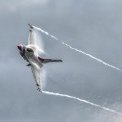
Make the others jealous
Gazzas and 2 others reacted to Stokey Pete for a topic
This time last year, I had a pair of Tamiya F-16s to keep me on the level during the lockdown. I have a sense of deja vu, as I approach that anniversary. My pit of ‘vipers’ grows somewhat. I currently have an IAF ‘Sufa’, and an Alaskan Aggressor built. I’m a fan of colourfully marked jets, so these 3 will be painted with the same theme. After a paint disaster, I’m rebuilding ‘Zeus’ from the single seater. The whole finish was riddled with cracks and splits owing to impatience and not enough cure time. I’ve got some schemes in mind for the pair of twin sticks. First one will definitely be painted as... I love the camp’ and the colourful tail. The second one presents a conundrum. I primarily wanted to attempt a Thunderbirds spare/media trips jet, but I’m unable to decide if I’m brave/skilled enough to try and pull a masking job off. So I’m leaning more towards either.... a heavily weathered HAF bird. Or...3 points -

Italeri CF-104 Starfighter "Kicked up a Notch": KLP Publishing eBook now Available!
Starfighter and one other reacted to chuck540z3 for a topic
March 30/21 Thanks to Covid and lots of extra time, I have finished the 1/32 Italeri F-104G kit, converted to a Canadian CF-104 in only 4 months, which is a record short time for me. I have a WIP Thread on how I built this model here: 1/32 Italeri CF-104 "Kicked Up A Notch" Kit is one of the latest versions with great decals, #2514. Aftermarket Items are as follows: Black Box Resin Cockpit, 32009, made for the Hasegawa kit Aires Electronics and Ammunition Bay, #2208 ResKit Engine and Exhaust, RSU32-20 ResKit CF-104 Wheels/Tires, RSU-32-9 Master F-104 brass Pitot Tube, AM-32-037 Eduard Exterior PE set, 32427 (only 1 part) Videoaviation SUU-21 Bomb Dispenser (converted to MN-1A), 141632 Airscale Instrument Bezels and Gauge Decals Belcher Bits CF-104 decals, BD-8 Belcher Bits Canadian T-33 decals, BD24-1 (Letters and Numbers only) HGW decal rivets, 322011 (> 9,000 of them!) Paint was mostly Alclad Chrome and Aluminum shades over Tamiya Gloss Black Lacquer (TS-14), followed by a clear coat of Tamiya X-22 to allow for decals and decal solutions on the fragile Chrome. Other shades were mostly MRP synthetic lacquers. Final Quick Thoughts This kit is a real mixed bag of some good features and many challenges, but overall can be made into a pretty accurate looking F-104. The deep and wide panel lines are the weakest part of the fuselage which are very hard to mitigate, so you pretty much have to just live with them. While the Black Box (Avionix) resin cockpit made for the Hasegawa kit fit fairly well with a few modifications, the Aires Avionics and Ammunition Bay was a very tight fit and is not recommended for beginners. The ResKit engine/exhaust and CF-104 wheels are outstanding, while the Videoaviation SUU-21 (converted to MN-1A) bomb dispenser was pretty good with 2 sets of decals. The biggest surprise was the kit decals, which I would also consider outstanding, but I understand that decals in earlier versions of this kit are not very good. The HGW decal rivets worked much better than I thought, but with over 9,000 of them, you really have to put in a lot of extra time and effort to get the desired effect. Overall, a very good modeling experience, but I’m also really glad it’s over with! Oh Canada eh!, for the subject theme. Here is generally the look I was going for (second one in), which was in the mid-60's before the "RCAF" was replaced with "CAF". Note the "modern" roundels, which is a fairly rare pic, because pics of CF-104's with RCAF on them almost always have the older and more complex maple leafs in the roundels, suggesting that this must have been a short lived event. Tonal color variations in the metallic skin, as well as painted areas for corrosion protection, were incorporated. Note: The metallic finish was very hard to photograph with my usual flat white background, which made the paint look dull, so I have added a few more pics with a blue background to show the metallic finish a bit better. I’m really proud of this "no-glue" accomplishment, which allows me to take stuff off that will break when transporting the model or flipping it over for pics. This is the Master brass pitot tube, but it’s not plug and play. I sanded the nose down before painting to ensure that the rear of the tube fit flush and used red decal film for the sharp red stripe, which should be about 5 bands. Lots of stencils and decals underneath as well. A few of the cockpit area. Note the holes where the pins are inserted along the sill on the right. Buried behind the Electronics bay is a fuel tank as found on early CF-104's, replacing the Ammunition Box since there was no gun. The angle of the Avionics door should be more vertical, but once you drill the holes for the pins you are stuck with what you get unless you want the door sloppy. Good enough! And now some walkaround pics. Cheers, Chuck2 points -
For the "In the Navy" group build I pulled a very old kit from the loft: Hasegawa TA-4J Skyhawk in 1/32 This kit was one of the first 1/32 Hasegawa kits (after their F-104) that was released around 1981 along with their single seat A-4E Skyhawk. I am sure many of folks here know or even have made this kit, but the last decades I have only seen a few made. It is still the only TA-4 trainer in this scale. As it is so long ago, I thought it would be nice to first show the contents of kit #S024: The sprues are in white plastic with some common sprues with the single seat A-4. Most notably is the longer fuselage. You get a few less "stores" in the TA-4 kit with only the wing fuel tanks. The few panel lines are raised and very tiny raised rivets are seen as well. That was the technology those days and it does not look bad at all. The decals in this kit are for a single US NAVY VF-126 "bicentennial" bird in 1976. The decals have "yellowed" over the years. I will stick them on a sunny window for a few weeks to brighten them up again with sun light. Or will make another scheme with different decals. This kit has a good outline and although the cockpit interior is basic (with optional 2 very crude pilots), it does have instruments and side panels with raised details. Very nice. But I will use an AVIONIX (probably ex- Black Box) resin cockpit set #32040 that I found in the loft as well. The resin parts are seen here and look good but the bottom mould block at the floors is rather thick. The consoles have very fine raised detail for the instruments. These are very tiny and a paint challenge. The ESCAPAC seats seem to be of type 1G-3. ============= For this Group Build model I will follow some suggestions during constructions as nicely explained by Mike for a TA-4G seen here at LSP (2014 article): https://www.largescaleplanes.com/articles/article.php?aid=2072 Some of these are: - inscribe panel lines - remove the "step" at wing nose with drooped slats - open main air intakes - improve cockpit interior - add detail on landing gear and in bays Other nice improvements would be: - to droop the trailing edge flaps - lengthen exhaust pipe - add detail inside the canopy I have plenty of reference books at home. But will also look at the many walk around photos that my modelling friend of WWW.IPMS.NL Cees made seen here: https://www.ipms.nl/walkarounds/walkaround-jets/561-walkaround-a4-skyhawk Many details on the single seat A-4 and TA-4 are similar. ================ Still I do not know what NAVY scheme to make the model in for this Group Build.... I have a few aftermarket US NAVY decals sets but also decals also to make an Australian Navy TA-4G. But first I have to sort out a few unknowns and may ask some questions here at LSP. Cheers, Meindert2 points
-

1:32nd scale Fokker D.II
Greif8 and one other reacted to sandbagger for a topic
Hi all, This ‘Special Hobby’ (Kit No:SH32064) model represents a Fokker D.II, serial number not known, attached to ‘Kampfeinsitzer Stafflen’ (Kesta) 4b sometime between April 1917 - October 1918 at Royal Bavarian AF, Freiburg. Figures ‘Kellerkind Miniature’ Germane engine crew (54101), ‘Wings Cockpit’ figures - seated LSK pilot (LSK 04A). Decals ‘Aviattic’ WW1 Fokker ‘streaked’ camouflage (ATT32058), ‘Aviattic’ Linen Weave effect (ATT32236) ‘Airscale’ WW1 instrument decals (AS32 WW1), ‘Xtradecal’ Parallel Stripes (Black XPS1) ‘Xtradecal’ Parallel Stripes (White XPS2). Propeller ‘ProperPlane’ Lang type propeller. Weapons ‘GasPatch’ early LMG ‘Spandau’ 08. Rigging accessories (as required) ‘GasPatch Elite Accessories’ Turnbuckles 1/48 scale, ‘Albion Alloy’s’ Micro-tube (Brass or Nickel Silver - various diameters). ‘Steelon’ mono-filament 0.12 mm diameter‘, ‘Stroft’ mono-filament 0.08, 0.12 mm diameter, ‘Maxima’ Chameleon mono-filament 0.12 mm diameter. Grass mat ‘Polak’ Wild Meadow (Variation C - 4703). Paints ‘Tamiya’ acrylics, ‘Mr. Colour’ enamels, ‘Alclad’ clear coats The basic forum build log can be found here: 1:32nd scale Fokker D.II - Page 3 - Works in Progress - Large Scale Planes As usual a fully detailed build log, in Adobe PDF format, can be viewed or downloaded from my site (linked in my signature block below). Many thanks, as always, for your kind comments and encouragement throughout this build. Mike2 points -
I cant comment on this level of work and workmanship. Will it leak oil too? As always..simply stellar Geoff2 points
-
Infinity Models SB2C-4 Helldiver update
MikeMaben and one other reacted to Dave Williams for a topic
Mine arrived today. Lots of parts, especially for the cockpit. Fine surface detail, but limited run assembly with just small nubs to attach the tail planes instead of the conventional tab, no locator pins, and the wings butt up against the fuselage with just a spar for alignment. Just a heads up, if you’re used to Tamiya kits, this one will take some work to get together as it’s kind of old school short run. Now just need to wait for the detail sets to come in.2 points -

Yellow Wings. Forgotten Models.
scvrobeson and one other reacted to williamj for a topic
Up next is the Stearman PT-17, Going to add a bit of AM to it just to help it look wee bit better. It is not the ICM ,Bought this before it was released and am not displeased with the kit at all.. So off we go.2 points -
I think there may be pandamic involved delays here boys....... I would suspect that as the world comes out of this, schedules may start to come back on track. Except for the Devastator....... Sorry Matt2 points
-

promises promises ......
Bill M. and one other reacted to scvrobeson for a topic
I still want my TBD Devastator Trumpeter promised 14 years ago. Matt2 points -
I have taken a break from machining of wheels and tires. In the mean time, I am exploring the possibility of creating them from 3D print, something I have not done yet. It has the potential for adding more detail and more exactness than I can provide with machined parts. We shall see. It also has the potential of saving me from more failure and heartbreak! And, I went back to work on the cockpit. Recall the LH side is as done as it can be for now. So now it's the RH side. The RH side cockpit is as busy as the LH side, and is dominated by the big electrical console, and the radio units. Other stuff for sure, but those are the biggies. Similar to the LH side, I decided to use the aux (side) instrument panel as the anchor, and go aft from there. This laser etched part was provided to me along with the main instrument panel by none other than Peter (Airscale), special order. Here it is painted, with decals, and ready to go: A few comments. Decals are from Peter's Lope's Hope 1/18 Mustang effort. This is a laminate of sorts - a metal back plate, where the decals are applied, a metal front plate with holes, and a clear plastic plate between. You see a blank large hole - it was supposed to receive a rounds counter, and I had no idea what it looked like. So I left it out! It would hide in the shadows anyway, so this aircraft will have no rounds counter. Installed on its larger aux panel, it looks like this: The white part with the paint scraped off is for the front end of the big electrical console. You see the yellow O2 bottle that I worked on a couple months ago - still with no inspection tag! No worries; it will get one Wolf. Note there is some stuff in front of the aux panel, and some new bracketry below and aft of it. See the next picture, labelled: That cluster of heating system valves is going to be orphaned - it gets a bunch of hydraulic lines that will never be seen, MOF the valves will never be seen. A waste of time. The fuel pressure regulator cannister is also largely unseen, except its red knobbed turn handle which can fairly easily be seen, and if one looks through the unfilled hole in the aux instrument panel (where the rounds counter would ordinarily be), one can see the top of the cannister! So there it is. It didn't get a max effort... The hydraulic valve assembly will also be a bit hard to see, but 10 (ten!) hydraulic lines emanate from it, 8 or 9 of which I will try to represent because they are more visible. There are a couple more little brackets I will fab and install, then it is on to the big electrical panel, its wire bundles, and the battery. That will get a max effort! And you will see at least some of that next post. Take care, hope you are having a nice spring. I am.2 points
-
- ignition wires were painted in yellow, also I glued wires to ignition box - here are photos of completed engine2 points
-
Is it my birthday again ? Already ??? Seems like only yesterday. Thanks awfully fellas2 points
-
2 points
-
Slowly progressing this. I finished the Alclad, then masked off everything that is meant to remain as "bare metal". I will paint white first, and to make sure that the red looks the same everywhere, I need to paint everything that will eventually be red, white. Along with what remains white, of course. So after spraying what seemed at the time like a gallon of white paint at the model: Now, in a familiar pattern, I can *wait until tomorrow* and then mask off the bits that will remain white. I cut the tail codes out quickly on the Silhouette, along with some circle masks for the hinomaru. Overall this is a busy but fairly basic scheme - most of it will just be masked with tape.2 points
-
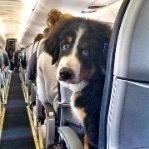
MH-6M Little Bird
Marcel111 and one other reacted to Pete Fleischmann for a topic
Hello all- all of this so far with Vallejo colors- the seat harness in black and then dry brushed. I use a small chisel tip brush to accurately (as possible) do the dry brush steps- The helmet visors start out black, then get a coat of Tamiya clear green, and then a few coats of Future Here you can see the slight difference between the figure on the right which has received an overall wash/filter, and the one on the left which has not- thanks for checking in! cheers Pete2 points -

MH-6M Little Bird
Marcel111 and one other reacted to Pete Fleischmann for a topic
Started with the two pilots. assembly- gaps filled with either JB Weld or Apoxie Sculpt Then a shot of Tamiya deck Tan then a dry brush of a lighter version of deck tan More multicam camo. First the light green. Also, I find it easier to paint the black cable on top of the helmet first, and then come in right next to it with the overall helmet color- much easier than trying to pick out a skinny cable with a small brush after the helmet is painted- then dry brush the light green more to follow-2 points -
While I'm working on the Spanish Harrier II, I finished an F-5E from Kitty Hawk. Bad at photographing models, I should buy a new camera and get some lessons... Anyway, here it is. This is the 6th Kitty Hawk kit I've made and this is the easiest by far. The T-28 and Kingfisher were really good, the Bronco, Sabre Dog and T-6 took more work. I've added a little detail to the cockpit, canopy and gun bay, I painted the tail. The blade antenna on the spine was replaced by the black GPS receiver. On the centreline is a external fuel tank, adopted from a brown aggressor. There was a bit of work to get the windscreen fitted - and some putty needed - but it turned out okay. The tubing on the seat and behind it is all scratched from different sized lead wiring. Masking the inside of the air intake was a pain, but worth the time. The panels and rivets from the kit are impressively nice. After painting and shading, just a wash is needed to get the details popping. The decals in the kit are great, but as mentioned, I didn't want to risk the decal for the vertical tail and painted it. Here's another photo of it; it was painted with Revell Aquacolors and some details in Gunze water colours. I saw a photo with part of the trailing edge flap in zinc chromate yellow, I thought that was a nice touch. And now, I get back to the Harrier II, I hope to finish it in a few months. Afterwards, I'll start a Mirage 2000D. That's one I've been waiting a long time to get and build. Haven't got it yet, but that just a matter of time. Ow, and I'm doing a little side project with a Ramjäger. I hope you like this Tiger II, sorry for the bad photos, the kit looks much better on my desk than in the photos. Keep building, everyone! Nic2 points
-
Good evening, Thank you very much! Well, the buckles, the straps, the exhaust ... In short, what remained to be done is done! The numbers and letters of the registration have been cut individually for a better rendering without any apparent carrier film. Basically, the Belle de Molsheim is finished. Maybe I'll spray a little dark smoky in some places ... and take more photos tomorrow. Voilà. Pascal2 points
-

Italeri CF-104 Starfighter "Kicked up a Notch": KLP Publishing eBook now Available!
Sasha As and one other reacted to chuck540z3 for a topic
Thank you everyone again for your very kind words. I really appreciate and read every one, even though I don't respond to individual ones very often, unless there is a question. That's where the "Thanks" button comes in very handy! For those of you who might want this build thread in a step by step guide, it looks like this Starfighter is being wedged into the long line-up of future eBooks at KLP Publishing. This will no doubt take a long time, but based upon what LSP Kevin did with my Tempest build, I think the wait will be worth it! Cheers, Chuck2 points -
I should note that the nose ends at the aft surface of STA-0. The extra length is just there to prevent the curve that occurs where the vacform bends around the front from ending up as part of the nose.1 point
-
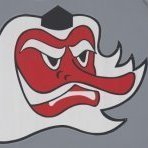
JetMads 1/32 Viggen
scvrobeson reacted to Kagemusha for a topic
Kit releases are delayed all the time, the Infinity Helldiver was due out six months ago.1 point -
JetMads 1/32 Viggen
Out2gtcha reacted to Markjames1968 for a topic
Been holding off saying this but have been discussing this with friends who have ordered the kit, some might agree , some may think im being alarmist, some might disagree vehemently , only time will tell but here goes... ive been expecting this, technically it is already the third excuse in a row re the timespan of the release.... arguably the other delays based on covid seemed plausible at the time, indeed to a certain point so does this BUT 500 kits at 189 dollars per kit =94,000 dollars ( 75000 dollars after factoring turkish tax) they apparently have a ‘team’ who have been working hard on this since september, thats (lets be generous ) and say 6 months of man hrs thats 15000 dollars a month (11500 after tax) lets assume they have a team of no more than 5 people, thats 2300 dollars per person for 6 months, without even thinkin what the MD of a company like this may want as remittance... if we factor in materials, and consumables, and cad licenses and other costs within a busines, theres now way i can see how a new company trying to produce this can possibly work on such a small income, i have thought it may go pearshaped from day one but have bit my tongue and given them every chance but things are starting to smell now imho......... just an opinion remember , but backed up by a LOT of evidence, circumstantial and otherwise,, other that 10 or so parts, we still have only seen cad dwgs and pics of decal sheets, mostly cyberware... yes i am aware they have already released one nice kit but its only anecdotal evidence that the company works as there are very few of them out there......1 point -
Can't wait to see it with the masks off!1 point
-
1 point
-
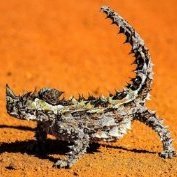
IBG PZL P.11C Vs Bf-109E-1 | Poland 1939 | 1:32/1:48
shadowmare reacted to Uncarina for a topic
Really nice work! Looking forward to putting this kit together. Cheers, Tom1 point -
Well we are progressing, after reading other builds I was aware of a problem with posing the canopy open in that the "doghouse" was too big, so when I joined the fuselage halves I sanded it down a bit. A quick test fit gave me this. And this Not too bad, though it still does not sit right, the problem is that the "doghouse" is too fat, so out with the sanders again. You can probably tell that I was putting off the moment of truth, that is fitting the fuselage and wings together, so I took the plunge and glued the wings to the fuselage fore and aft which was not a bad fit at all. But those gaps were a bit frightening, however as I posted earlier I have dealt with this before so off I went and rummaged through my box of plastic card. The starboard side was easy it only needed a thin sliver of card but the port side needed some 2 mm card, which I had to sand down somewhat to fit, so once I was happy with the fit some CA was applied to the edges and the plastic card inserted. I made these inserts quite loose as I did not want to disturb the wing too much, by clamping the wing to the wheel well insert and applying copious amounts of CA the wing centre section remained flat with the outer wings having some dihedral as per the drawings. Once I had carved away the excess plastic from the fillets CA was applied to fill any gaps, as usual I did not leave this long to dry as it would have been too hard to sand and would have taken ages to get a good finish. And this is where we are now, coming along nicely though some detail has been lost. I had to dig these out from storage as I have not used them for a while, my pile of micro mesh of varying grades, I'd better leave them out for a while. Cheers Dennis1 point
-
IBG PZL P.11C Vs Bf-109E-1 | Poland 1939 | 1:32/1:48
shadowmare reacted to Greif8 for a topic
Very nice builds. Ernest1 point -
1 point
-
Before joining the engine to the cowl I had to make the little braces that extend from the crankcase cover to the front inside of the cowl. I discovered by trial and error that a #79 drill bit would make a hole just big enough to accept three pieces of 34-gauge stainless wire. When is everything just going to be metric? Installed into the cowl. I will probably apply a little bit of clear flat paint mixed with a touch of light gray to those wires to tone down the shine. Onward to painting! Here's the underside of the wing-to-fuselage join fully cleaned up. And the whole airframe sanded through 6000-grit I've developed a bit more of a system to try and get that all-important glossy black undercoat that is the foundation for a good metallic finish. From this fully-sanded state, I 1. wipe the model down with water (on a lint-free Kimwipe, which is the only thing I'll clean the model with from this point on), 2. let it fully dry, 3. vigorously scrub it with a clean soft-bristle toothbrush to get all of the sanding dust out of the panel line and rivet detail, 4. wipe it down with 70% isopropyl alcohol and let that dry I also have found that I'm better off doing the paint job in sections, masking off the other parts so I don't get drifting/drying paint sticking to areas that I don't want it on. So for this one I'll start by painting just the wings (top and bottom) from the main stiffening rib outward. Another thing I am experimenting with is fighting static buildup, which can attract dust to the wet paint surface. In addition to running a small dust precipitator 24/7 in the room I paint in, I have made this little ground wire to attach the model directly to the airbrush. The static buildup occurs because the aerosol paint flow strips electrons off of the airbrush and transports them to the model. This direct metal wire connection should allow them to flow back to the airbrush much more efficiently then the path through my body (a comparatively good insulator). Focusing on a small area allows even someone with my limited airbrush skills to get a uniform wet coat of paint down (in this case Mr Color C-2 - my go-to Gloss Black). The paint still looks a bit orange-peely when wet, but it levels nicely. This is partially dry; it will be even smoother when fully hardened off: I'll let this dry for a full day so I'm 100% confident in masking over the black paint to isolate the next region for painting. I'll probably do two more separate sections, or possibly even three, to complete the black. Then do the Alclad in a similar fashion. It takes time, but I haven't been able to get a decent result when I try to paint an entire 1/32 model airframe in a single shot with an NMF. Whereas this piecemeal approach worked really well on my P-51 for the last GB.1 point
-
Thanks, but at this stage I would be buffing X-22 clear coat which will do nothing but maybe dull the finish. A little deeper, and I'd be buffing Alclad Chrome that is so thin, it comes off with just my fingers, so I'll pass on that. Maybe the look below is a bit better? Well I thought about the weathering some more (all of 8 hours!) and decided the metallic finish was never going to get scratches after all, but it needed a bit more of something. Not much, but something, when it dawned on me that I should be using a darker metallic wash than the light aluminum ones I had tried before. Here is the line-up I have used before from TrueEarth.com, with the "Warm" one on the left used on my Tempest build. These washes are water based and come off with water on a damp rag, but be careful if you don't have an acrylic clear coat on the paint, because they sometimes stick like snot to an oven door and no amount of rubbing will take them off. The key is to just do very small areas at a time and not let the wash sit for more than 30-45 seconds or so before you wipe it off. If you do get an area that won't rub off, use a little paint solvent on a rag- hence the need for a clear coat if you use enamels or lacquers- and it will come off easily. As advertised, these washes give off a metallic sheen that blends with the paint underneath and are better for this application than just a regular wash that will jump into panel lines I didn't want to emphasize. I chose the darkest one on the far right, because the lighter ones didn't do much for obvious reasons and real metal always has areas that look darker than others, depending on the lighting and the reflections. My application was specific to recessed detail and open panel areas, trying not to get the dark wash into panel lines until the wash was wiped off. After trying the wash on a small test area, I really liked the results and ultimately did the entire top surface and the sides. The bad news is that this change doesn't photograph very well at all, and you would be hard pressed from these pics to see much difference from the earlier pics from yesterday, mostly because the changes are subtle, but to my naked eye, significantly better. The finish looks a lot more like real metal now with darkish highlights all over the place that change with lighting, more or less like real metal does. Anyway, a few more pics and sorry for so many, because I have tried to show just about every angle under various lighting conditions. Consider the metallic weathering DONE! Cheers, Chuck1 point
-
A 1/6 resin kit, a bit of a break from the usual. I deleted the "bat wings" and added a flowing/blowing cape type thing from offset printing press foil. A wood stir stick for the spear handle, annealed wire for the thumb rings and necklace. Painted with Vallejo acrylics, Tamiya acrylics, some oils and Alclad lacquer for the metal bits, my 6th figure build. Thanks for looking1 point
-
As a Canadian kid growing up we were always taught about the importance of Canadian food exports and keeping supply lines open during the Battle of the Atlantic. I had never really given much thought to British farmland, until an adult and learned about the really herculean effort the British agricultural industry made to keep the UK fed during the war. Plowing up 6.5 million new acres in a year and doubling food production is staggering. But back to the 109 which isn't in a field yet. I finished up the interior in Gunze H70 and various Vallejo colours. RLM 02 I've learned is a pain in the neck to weather compared to RLM66. I also added a HGW belt, Airscale placards and an Eduard Zoom instrument panel since my photoetch IP was damaged. The close up pictures show I have a little clean up to do as there is some fuzz on a couple things and one decal is peeling up. I'll move forward with more construction before I seal the fuselage as I forgot to paint the oil cooler interior and I might as well do the radiators at the same time. Thanks for looking. - Jeff1 point
-
1 point




